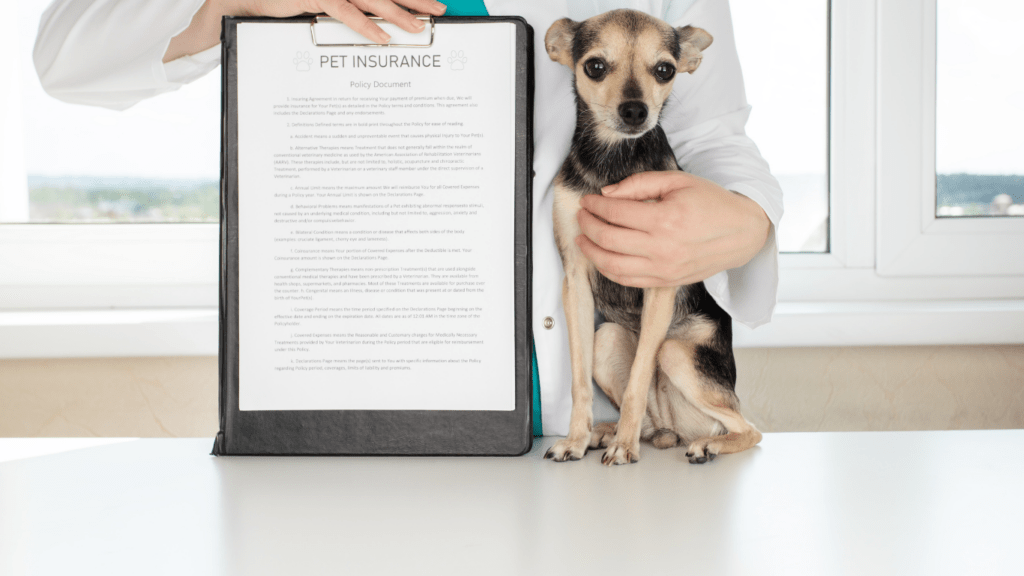Overview of Pet Insurance
Pet insurance offers a financial safety net for unexpected veterinary costs. Policies typically cover accidents, illnesses, and sometimes routine care. As veterinary costs rise, having insurance can mitigate large out-of-pocket expenses.
Most pet insurance providers offer various coverage levels. Basic policies usually cover accidents and illnesses, while comprehensive plans may include wellness visits, vaccinations, and preventive care. Some providers even offer add-ons for services like dental care and alternative therapies.
Monthly premiums vary widely, influenced by factors like the pet’s age, breed, and location. For example, insuring an older dog or a breed prone to health issues often comes with a higher monthly cost.
Filing claims is straightforward. After paying the veterinarian, policyholders submit a claim to their insurer for reimbursement. The reimbursement percentage depends on the policy, with typical plans covering 70% to 90% of costs.
Choosing the right pet insurance involves comparing multiple factors. It’s crucial to review coverage options, exclusions, waiting periods, and customer reviews. Researching thoroughly ensures you select a policy that fits your pet’s needs and your budget.
Key Features of Pet Insurance in 2024

Pet insurance in 2024 offers a range of features designed to meet the diverse needs of pet owners. Here’s an analysis of the key features.
Coverage Options
Coverage options in 2024 have become more comprehensive. Most policies cover accidents, illnesses, and emergencies. Wellness plans, which include routine checkups and vaccinations, are available as add-ons.
For example, companies offer coverage for dental care, physiotherapy, and even behavioral therapy. Comprehensive plans usually include diagnostic tests, surgeries, hospitalization, and prescription medications. Pet owners can choose between different levels of coverage based on their pet’s needs and their budget.
Policy Costs
Policy costs vary significantly in 2024 based on factors like pet species, breed, age, and location. Premiums for dogs generally range between $30 and $60 per month, while cat insurance is often lower, averaging $20 to $40 monthly.
Younger pets tend to have lower premiums. Insurers also consider pre-existing conditions, which can increase costs. Deductibles, which are the amount one pays out of pocket before insurance starts covering costs, typically range from $100 to $1,000. Co-pays, the percentage of the bill the policyholder pays after the deductible, usually span from 10% to 30%.
Exclusions and Limitations
Exclusions and limitations remain critical when evaluating pet insurance in 2024. Common exclusions include pre-existing conditions, cosmetic procedures, and elective surgeries.
Some policies exclude hereditary and congenital conditions unless added explicitly. Insurers might not cover specific breeds prone to hereditary issues.
Annual, per-incident, or lifetime caps can limit the amount an insurance company pays over a designated period. Understanding these limitations helps in choosing the right policy that minimizes unexpected out-of-pocket expenses.
Benefits of Having Pet Insurance
Pet insurance offers several advantages that help pet owners manage the costs and stresses of unexpected veterinary issues. Let’s explore some key benefits.
Financial Security
Pet insurance provides essential financial security by covering unexpected costs, reducing the burden of veterinary bills. When a pet faces serious health issues or emergencies, treatment costs can escalate quickly.
For example, according to the American Pet Products Association, average emergency vet visits cost between $800 and $1,500. Covering these expenses without insurance can drain savings or lead to financial strain. A comprehensive pet insurance policy mitigates this risk, paying a significant portion of veterinary expenses.
Access to Better Care
Having insurance for pets grants access to better care by removing cost barriers to advanced treatments. Innovative medical procedures and specialty care options can improve outcomes for pets but are often expensive. For instance, cancer treatments or complex surgeries might cost several thousand dollars.
With insurance, owners are more likely to choose the best available treatments, ensuring higher quality of care. According to North American Pet Health Insurance Association (NAPHIA), insured pets are more frequently treated for severe ailments owing to the reduced financial pressure.
Peace of Mind
Pet insurance offers peace of mind, knowing that financial constraints won’t limit a pet’s healthcare options. Worrying about how to afford a pet’s medical treatment adds stress to already challenging situations.
Knowing that insurance covers a significant portion of costs allows pet owners to focus on their pet’s recovery without stressing over finances.
For instance, mental health surveys among pet owners show lower stress levels in those with pet insurance compared to those without. With financial concerns alleviated, owners can ensure pets receive timely and appropriate care.
Drawbacks of Pet Insurance
While pet insurance offers many benefits, there are drawbacks to consider. It’s crucial to weigh these factors before making a decision.
Potential Costs
Premiums, deductibles, and co-pays can add up quickly. Monthly premiums range from $20 to $60 depending on the coverage, breed, and age of the pet. Unexpected claim denials lead to paying out-of-pocket even with insurance.
Complex Policies
Understanding pet insurance policies can be challenging. Policies often include terms like “pre-existing conditions,” “waiting periods,” and “per-incident limits.” These terms require careful review to fully comprehend coverage details.
Limited Coverage
Certain conditions and treatments might not be covered. Many policies exclude hereditary conditions, routine check-ups, and dental care. Some plans also have annual or lifetime caps on payouts, limiting reimbursement options.
Comparing Pet Insurance Providers
Choosing the best pet insurance provider involves understanding the top options and selecting a plan that meets specific needs.
Top Providers in 2024
When comparing pet insurance providers, it’s crucial to consider the top players in the market. Some leading options include:
- Healthy Paws: Offers comprehensive coverage including accidents, illnesses, and emergency care. It has no cap on claims payouts.
- Nationwide: Provides a wide range of coverage, including exotic pets. Unique wellness plans cover routine care.
- Embrace: Features customizable plans with preventive care options. Annual deductible resets aid in cost management.
- Trupanion: Covers illnesses and injuries with a direct payments option to vets, eliminating reimbursement wait times.
- ASPCA: Delivers extensive coverage levels and wellness add-ons. Renowned for strong customer service and flexible policies.
How to Choose the Right Plan
Choosing the right pet insurance plan requires evaluating various factors:
- Coverage Types: Check if the plan covers accidents, illnesses, and preventive care. Examples include vaccinations and dental cleaning.
- Exclusions and Limitations: Understand what’s excluded, like hereditary conditions or specific treatments.
- Cost and Premiums: Compare costs, premiums, deductibles, and co-pays. Balance affordability with coverage benefits.
- Reimbursement Levels: Evaluate reimbursement percentages and payout limits to ensure they align with financial needs.
- Customer Reviews and Reputation: Research reviews and company reputation to gauge reliability and service quality.
Using these criteria, you can match plans to your pet’s specific healthcare needs, balancing cost and comprehensive coverage.




